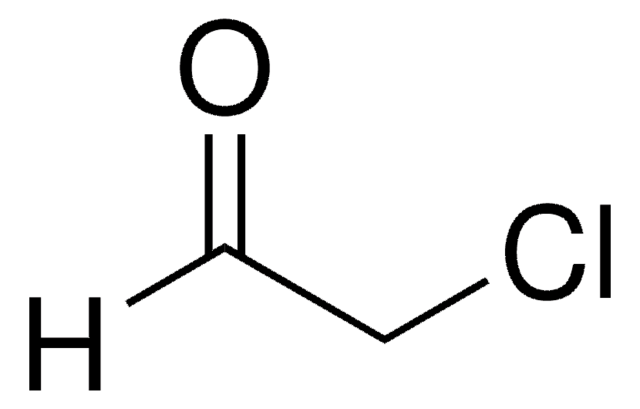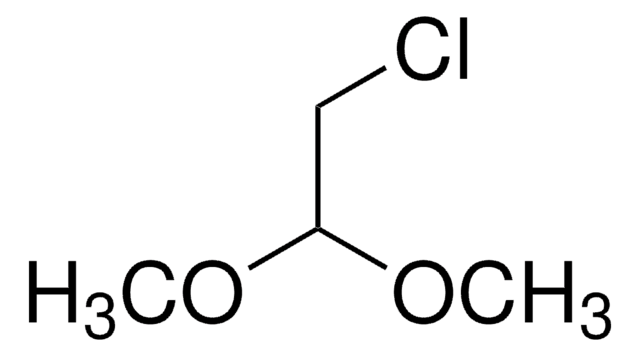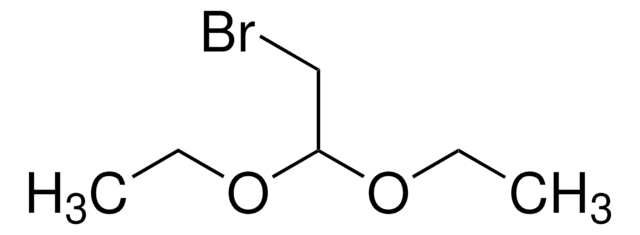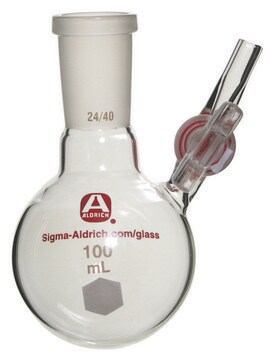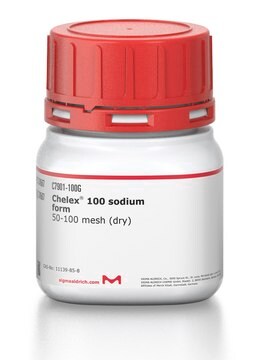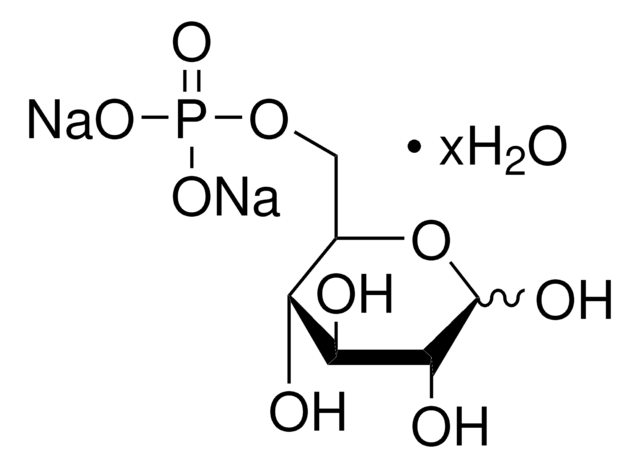10907
Chloroacetaldehyde solution
produced by Wacker Chemie AG, Burghausen, Germany, ≥45.0% in H2O (density determination)
Synonym(s):
CLACH
About This Item
Recommended Products
grade
produced by Wacker Chemie AG, Burghausen, Germany
Quality Level
form
solid
concentration
≥45.0% in H2O (density determination)
bp
80-100 °C (lit.)
functional group
aldehyde
chloro
SMILES string
[H]C(=O)CCl
InChI
1S/C2H3ClO/c3-1-2-4/h2H,1H2
InChI key
QSKPIOLLBIHNAC-UHFFFAOYSA-N
Looking for similar products? Visit Product Comparison Guide
Related Categories
Application
Biochem/physiol Actions
Other Notes
Signal Word
Danger
Hazard Statements
Precautionary Statements
Hazard Classifications
Acute Tox. 1 Inhalation - Acute Tox. 2 Dermal - Acute Tox. 3 Oral - Aquatic Acute 1 - Carc. 2 - Eye Dam. 1 - Skin Corr. 1B - STOT SE 3
Target Organs
Respiratory system
Storage Class Code
6.1A - Combustible acute toxic Cat. 1 and 2 / very toxic hazardous materials
WGK
WGK 3
Flash Point(F)
143.6 °F - closed cup
Flash Point(C)
62 °C - closed cup
Personal Protective Equipment
Regulatory Listings
Regulatory Listings are mainly provided for chemical products. Only limited information can be provided here for non-chemical products. No entry means none of the components are listed. It is the user’s obligation to ensure the safe and legal use of the product.
PDSCL
Poisonous substance
FSL
Group 4: Flammable liquids
Type 2 petroleums
Hazardous rank III
Water insoluble liquid
ISHL Indicated Name
Substances Subject to be Indicated Names
ISHL Notified Names
Substances Subject to be Notified Names
JAN Code
10907-1KG:4548173300955
10907-BULK:
10907-VAR:
10907-25KG:4548173300962
10907-230KG:
Choose from one of the most recent versions:
Already Own This Product?
Find documentation for the products that you have recently purchased in the Document Library.
Our team of scientists has experience in all areas of research including Life Science, Material Science, Chemical Synthesis, Chromatography, Analytical and many others.
Contact Technical Service